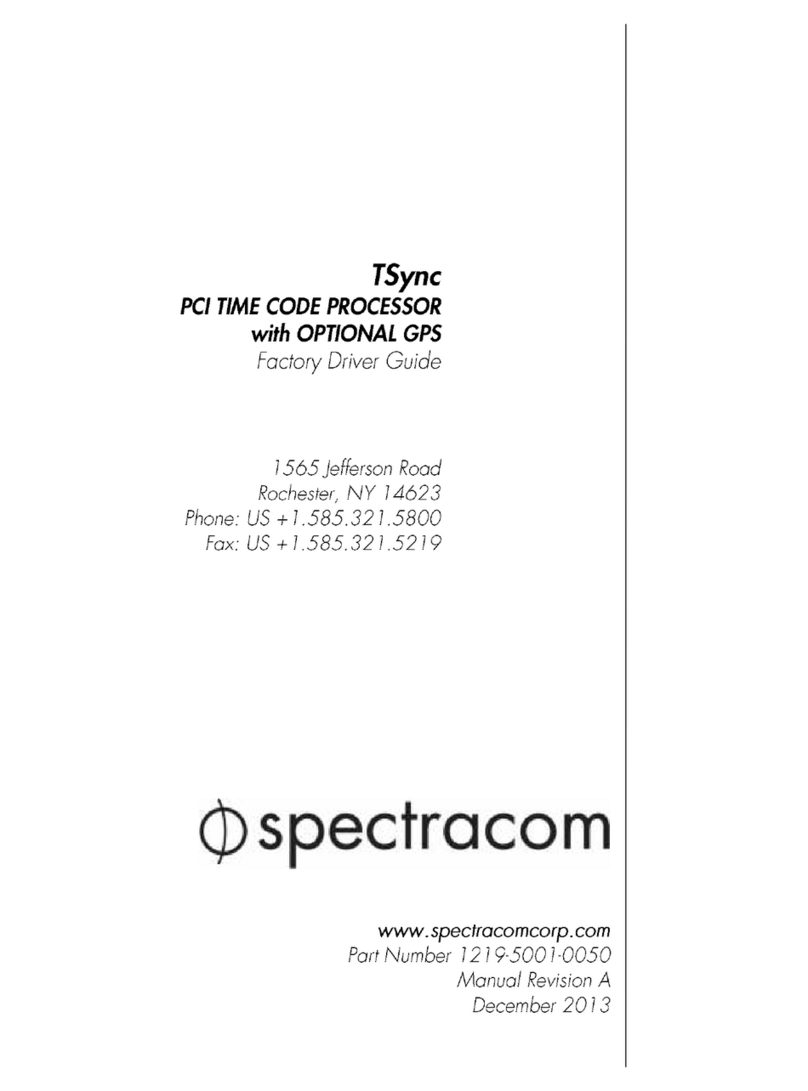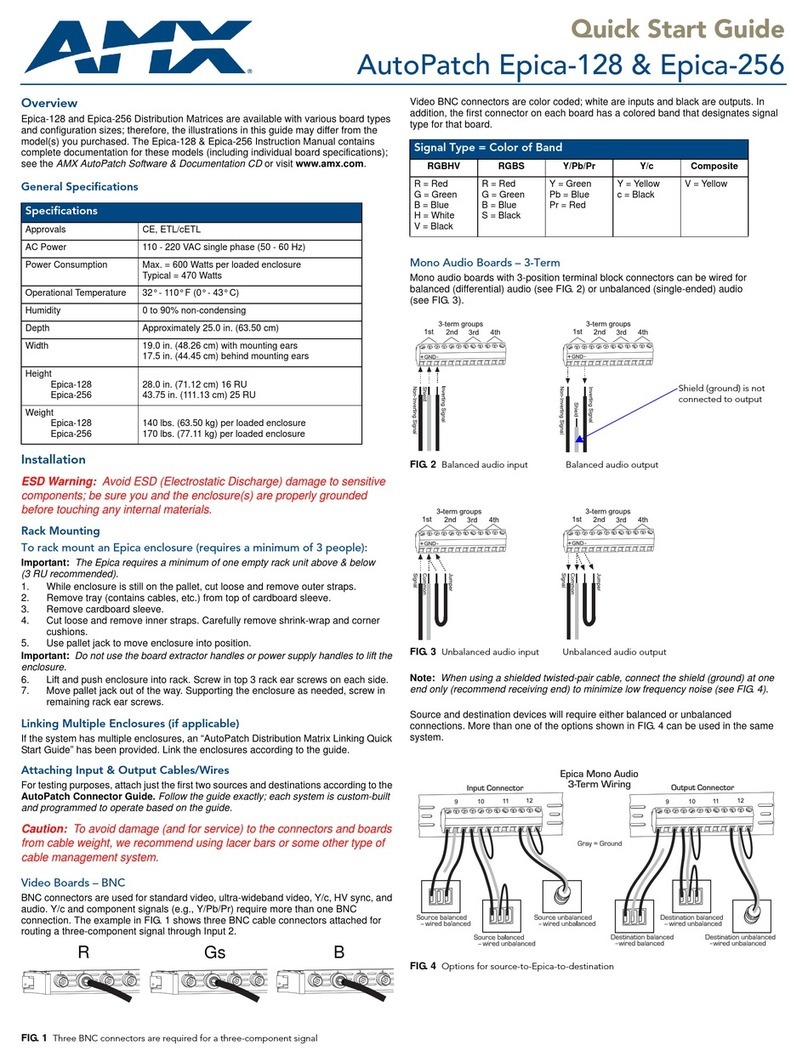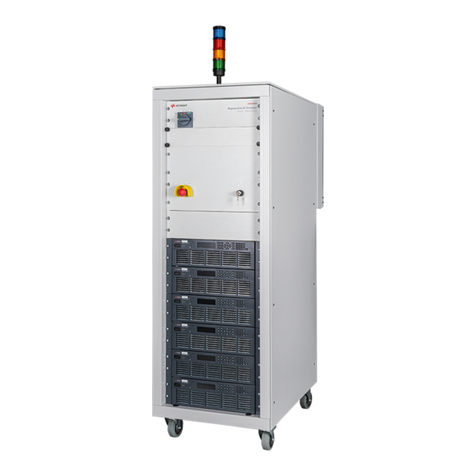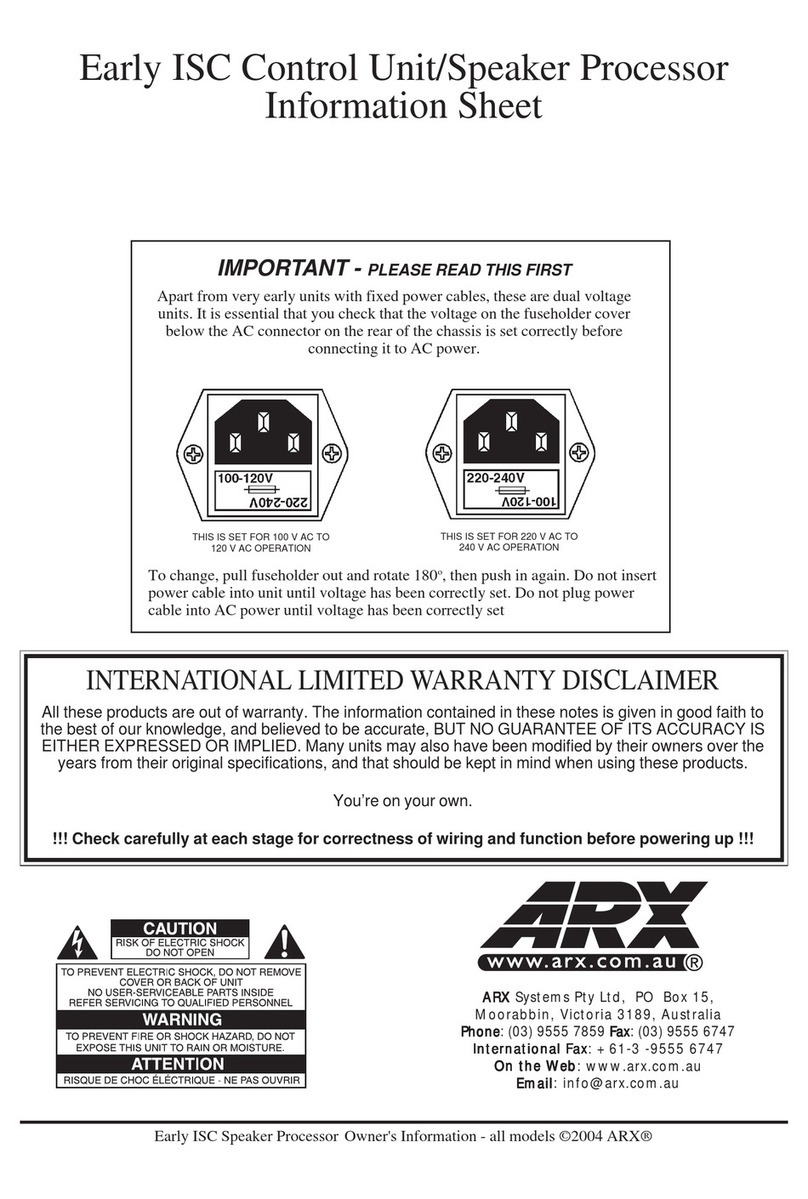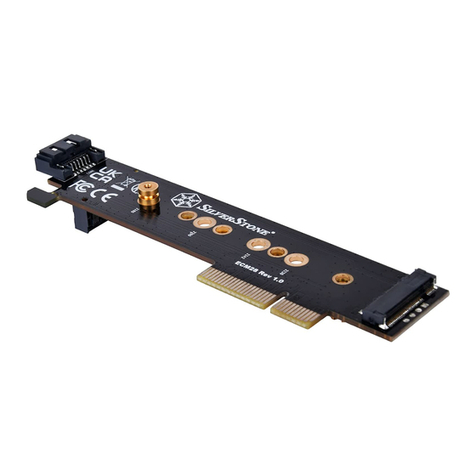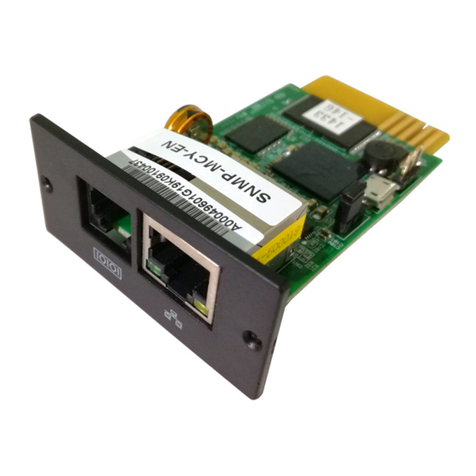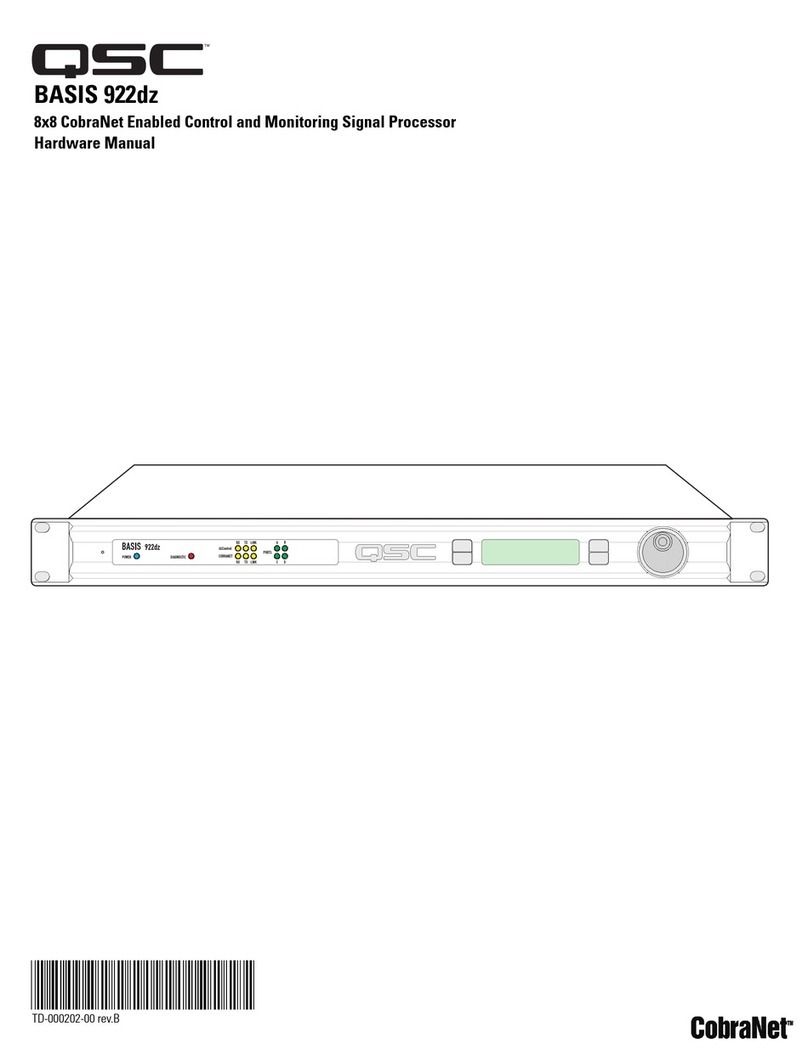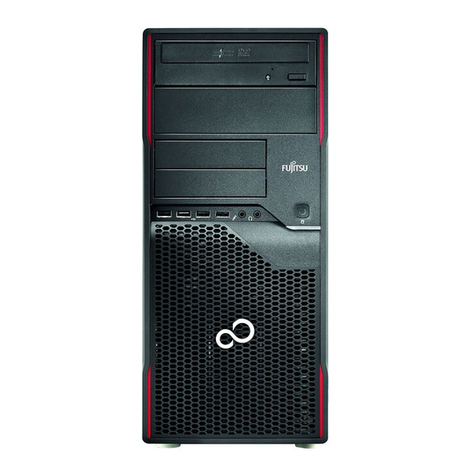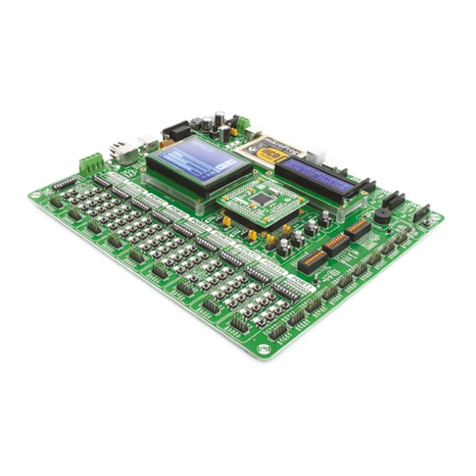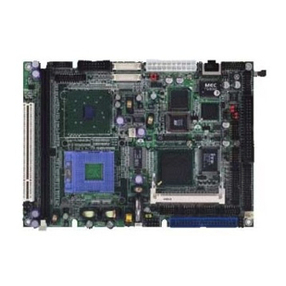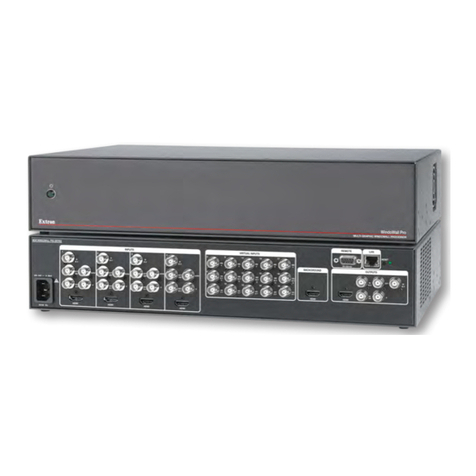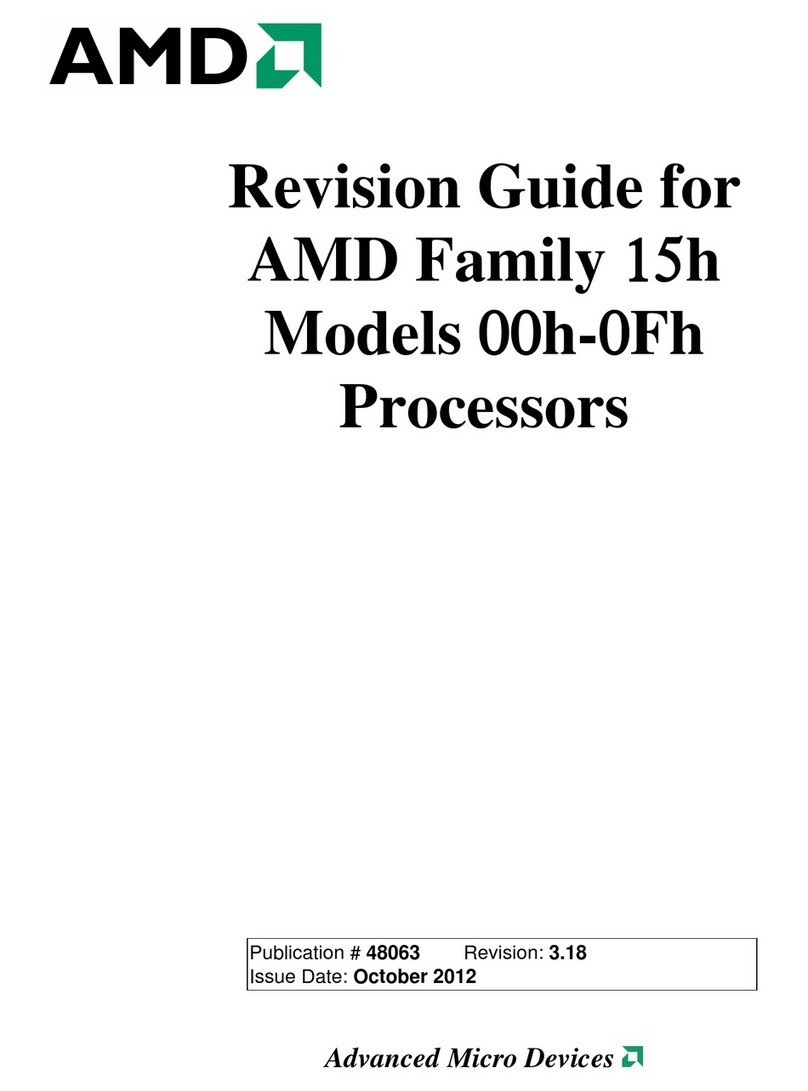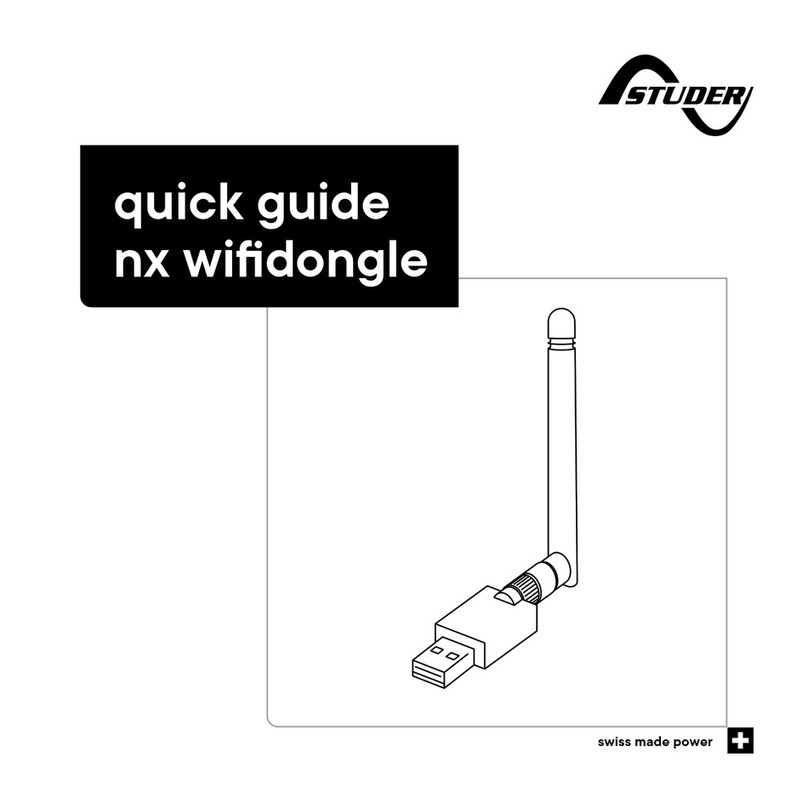Shimmer Shimmer3 User manual

Copyright © Shimmer Research 2013
Realtime Technologies Ltd IMU User Manual
All rights reserved Rev 1.1
1
Shimmer3
Bridge Amplifier+ Expansion Board
User Guide
Revision 1.6

Copyright © Shimmer 2016
Realtime Technologies Ltd Shimmer3 Bridge Amplifier+ User Guide
All rights reserved Rev 1.6
2
Legal Notices and Disclaimer
Redistribution IS permitted provided that the following conditions are met:
Redistributions must retain the copyright notice, and the following disclaimer. Redistributions in electronic form
must reproduce the above copyright notice, this list of conditions and the following disclaimer in the
documentation and/or other materials provided with the document.
Neither the name of Shimmer Research, or Realtime Technologies Ltd. nor the names of its contributors may
be used to endorse or promote products derived from this document without specific prior written permission.
THIS DOCUMENT IS PROVIDED BY THE COPYRIGHT HOLDERS AND CONTRIBUTORS "AS IS" AND
ANY EXPRESS OR IMPLIED WARRANTIES, INCLUDING, BUT NOT LIMITED TO, THE IMPLIED
WARRANTIES OF MERCHANTABILITY AND FITNESS FOR A PARTICULAR PURPOSE ARE DISCLAIMED.
IN NO EVENT SHALL THE COPYRIGHT OWNER OR CONTRIBUTORS BE LIABLE FOR ANY DIRECT,
INDIRECT, INCIDENTAL, SPECIAL, EXEMPLARY, OR CONSEQUENTIAL DAMAGES (INCLUDING, BUT
NOT LIMITED TO, PROCUREMENT OF SUBSTITUTE GOODS OR SERVICES; LOSS OF USE, DATA, OR
PROFITS; OR BUSINESS INTERRUPTION) HOWEVER CAUSED AND ON ANY THEORY OF LIABILITY,
WHETHER IN CONTRACT, STRICT LIABILITY, OR TORT (INCLUDING NEGLIGENCE OR OTHERWISE)
ARISING IN ANY WAY OUT OF THE USE OF THIS DOCUMENT, EVEN IF ADVISED OF THE
POSSIBILITY OF SUCH DAMAGE.

Copyright © Shimmer 2016
Realtime Technologies Ltd Shimmer3 Bridge Amplifier+ User Guide
All rights reserved Rev 1.6
3
Table of Contents
1. Introduction .........................................................................................................................4
2. General Information .............................................................................................................5
2.1. Pre-Requisites .........................................................................................................................5
2.2. Bridge Amplifier+ Expansion Board Specification...................................................................5
3. Hardware Considerations...................................................................................................... 6
3.1. Board Layout and Connections...............................................................................................6
3.2. Output Signals.........................................................................................................................7
4. Using the Bridge Amplifier+ Module...................................................................................... 8
4.1. Load Cell Calibration: Calculating Load...................................................................................8
4.2. Resistance Calibration: Calculating Resistance.......................................................................8
5. Firmware Considerations ......................................................................................................9
6. Hardware Customisation .................................................................................................... 10
7. Troubleshooting ................................................................................................................. 11
7.1. Verifying Your Shimmer Bridge Amplifier Works..................................................................11
7.2. Secure connection between Shimmer and expansion board...............................................11
8. Appendices......................................................................................................................... 12
8.1. Assembly ...............................................................................................................................12
Opening the Bridge Amplifier+ enclosure.....................................................................................12
8.2. Recommended accessories...................................................................................................12
Philips 21091A Technical Data......................................................................................................12
8.3. How to Connect a Wheatstone Bridge to the Shimmer Bridge Amplifier ............................13

Copyright © Shimmer 2016
Realtime Technologies Ltd Shimmer3 Bridge Amplifier+ User Guide
All rights reserved Rev 1.6
4
1. Introduction
This document is an accompaniment to the Shimmer Bridge Amplifier+ Expansion Board. Its purpose
is to aid the user in getting started with Shimmer Bridge Amplifier+ Expansion Board.
The Shimmer Bridge Amplifier+ Module contains a bridge amplifier, excitation source, and connector
enabling force measurement with Shimmer. The expansion board is ideal for all load, weight, force,
torque, and pressure measurements through the connection of a user-supplied strain gauge based
bridge sensor or load cell. One application area is muscle capacity testing including pinch-grip, lift-
bar, and grip-strength.
The Bridge Amplifier circuitry detects variance in resistance values when force is applied to the load
cell. The small, lightweight, wearable form factor allows for measurements free from wired
constraints to allow for natural range of motion, and measurement outside of a dedicated lab
setting.
Additionally, the board has a connector and amplifier for Resistance measurement. For example, this
can be used to measure data from a temperature sensor, like the Philips 21091A, or other
resistance-based sensors with a range of 1k- 20k.

Copyright © Shimmer 2016
Realtime Technologies Ltd Shimmer3 Bridge Amplifier+ User Guide
All rights reserved Rev 1.6
5
2. General Information
2.1. Pre-Requisites
A Shimmer3 device programmed with appropriate firmware.
oLogAndStream (v0.6.0 or greater) can be used to simultaneously log data to SD card
and stream data over Bluetooth.
oSDLog (v0.12.0 or greater) can be used to log data to the SD card.
oBtStream (v0.7.0 or greater) can be used to stream data over Bluetooth.
oAll are available for download from www.shimmersensing.com.
A Shimmer Bridge Amplifier+ Expansion Board.
A suitable strain gauge load cell or resistance-based sensor.
2.2. Bridge Amplifier+ Expansion Board Specification
Bridge Amplifier:
oGain1: 183.7 ± 1% (Normal Channel), 551 (3x Normal) ± 1% (High Gain Channel)
oFrequency Range1: DC..1kHz (Normal Channel), DC..100Hz (High Gain Channel)
oCommon Mode Rejection1: higher than 110dB
oInput Impedance1: 50MOhm
oInput Signal Range: ±7mV, ±2.5mV/V (Normal Channel), 0-4mV, ±1.43mV/V (High
Gain Channel)
oZero-load Noise: 12mV RMS both outputs, < 1% full-scale (Normal Channel), < 0.5%
full-scale (High Gain Channel)
oExcitation Voltage2: 2.8V ± 5%
oInput Protection: Current limiting, EMI/RF suppression
Resistance Amplifier
oGain1: 10.1 +/-2%
oPull-up/Input Impedance: 200kOhms to +3.0V
oFrequency Range1: DC..408Hz (2nd Order)
oSignal Range: 280mV or 20kOhms (1k-20kmeasurement range recommended)
oZero-load Noise: 0.1 mV RMS at output.
Connections: Two 3.5mm jacks (headphone type) for 4 conductor shielded cable for Bridge
Amplifier and Resistance Amplifier,
Current Consumption: < 100µA (Excitation disabled), 17mA (Excitation enabled3)
EEPROM memory: 2048 bytes.
1Calculated specification, exact value subject to environmental and component variation.
2The Excitation source is software controlled.
3This value is load-cell dependant, to estimate use the formula I = 1 + 2.8/(RSGin || RSGout); RSG data is
available from the load-cell manufacturer.

Copyright © Shimmer 2016
Realtime Technologies Ltd Shimmer3 Bridge Amplifier+ User Guide
All rights reserved Rev 1.6
6
3. Hardware Considerations
3.1. Board Layout and Connections
The board layout for the Bridge Amplifier+ Expansion Board is illustrated in Figure 3-1, whilst
connections for the 3.5 mm jacks on the board and their corresponding functions are listed in Table
3-1 and Table 3-2. For details on the connections for J6 and J7, which connect the board to the
Shimmer3 mainboard, please refer to the Shimmer User Manual, which can be downloaded from the
Shimmer website.
Figure 3-1 Board Layout for Bridge Amplifier+ Expansion Board
The 3.5 mm 4-position jack connectors, J3 and J5, (indicated in Figure 3-1) have four connections
each, as labelled in Figure 3-2. Their connections are listed in Table 3-1 and Table 3-2.
Figure 3-2 Connector labels for 3.5mm 4-position jack
Connector
Pin #
Shimmer3
Label
Function / Notes
Sleeve (J3.1)
GND
Ground Connection
Tip (J3.2)
SGP
Signal (Positive)
Ring1 (J3.3)
SGN
Signal (Negative)
Ring2 (J3.4)
PV_SG
2.8V if GPIO_INTERNAL1 is high.
Table 3-1 Shimmer Bridge Amplifier+ Expansion Board connections for J3.
J5 indicated by yellow
colour on connector
tip

Copyright © Shimmer 2016
Realtime Technologies Ltd Shimmer3 Bridge Amplifier+ User Guide
All rights reserved Rev 1.6
7
Important Note: Do not insert a two-position 3.5mm plug into the J3 connector as this may cause a
short-circuit between PV and GND.
Connector
Pin #
Shimmer3
Label
Function / Notes
Sleeve (J5.1)
GND
Ground Connection
Tip (J5.2)
SGN
RDIV1 (Signal)
Ring1 (J5.3)
GND
Ground Connection
Ring2 (J5.4)
GND
Ground Connection
Table 3-2 Shimmer Bridge Amplifier+ Expansion Board connections for J5.
Important Note: The pin-out of the J5 connector is not the same as that for other Shimmer3
expansion boards and is not compatible with Shimmer accessories, such as the Optical Pulse
Sensing Probe.
A high quality four-position 3.5mm jack with cable is available for purchase from Shimmer. You can
wire this connector to your load cell according to the connections in Table 3-1.
3.2. Output Signals
Table 3-3 below lists the ADC channel of the Shimmer3 to which each of the output signals from the
Bridge Amplifier+ Expansion Board is connected.
Signal
ADC channel
Function
Bridge Amplifier Low Gain
A14
bipolar pre-amplification
Bridge Amplifier High Gain
A13
additional 3x gain for unipolar load cells
Resistance Amplifier Output
A1
resistance pre-amplification
Table 3-3 ADC channels for Bridge Amplifier+ Expansion Board output signals

Copyright © Shimmer 2016
Realtime Technologies Ltd Shimmer3 Bridge Amplifier+ User Guide
All rights reserved Rev 1.6
8
4. Using the Bridge Amplifier+ Module
4.1. Load Cell Calibration: Calculating Load
To convert the output of the Shimmer to a quantifiable unit you require:
Output specification for the load cell device you are using in mV/V.
Knowledge of the daughter board gain (Normal or High Gain Channel, see specification
overview above).
The calculation procedure is:
1. Measure the ADC output difference (ADCDIFF) between a zero-load reading and the reading
of interest in your application. Referencing the actual zero-load reading obviates
consideration of DC offset error.
2. Convert the ADCDIFF into an analogue voltage difference (VDIFF) in mV using a ratio
3000mV / 4095bits = VDIFF (mV)/ ADCDIFF (bits)
where 4095 is the resolution of the Shimmer 12bit ADC
VDIFF (mV) / = ADCDIFF (bits) * 3000 mV/4095 bits
3. Divide the voltage by (2.8V x gain) to compute the load-cell output (LCOUT) in mV/V
LCOUT (mV/V) = VDIFF (mV) / (2.8V * gain)
4. Refer to the load cell calibration report or datasheet to determine the rated output (ROUT) in
(mV/V)/lb or (mV/V)/kg.
LOAD = LCOUT / ROUT
Example Calculation:
The high gain output has a zero-output ADC value of 230. In a grip test using a Futek LMD500 the
peak ADC value is 1430. What is the load in lbs?
(1) ADCDIFF = 1430 bits –230 bits = 1200 bits
(2) VDIFF = 1200 bits * 3000 mV/4095 bits = 879 mV
(3) LCOUT = 879 mV / (2.8V * 551) = 0.570 mV/V
(4) This calibration data for the LMD500 used has a rated output of 2.83mV/V @ 300lbs.
LOAD = 0.570 (mV/V) / (2.83(mV/V) / 300lbs) = 60.42lbs
4.2. Resistance Calibration: Calculating Resistance
For the Resistance amplifier channel, the relationship between the resistance at the input, , and
the voltage output, , is as follows:
where = 3V and should be measured in volts.

Copyright © Shimmer 2016
Realtime Technologies Ltd Shimmer3 Bridge Amplifier+ User Guide
All rights reserved Rev 1.6
9
5. Firmware Considerations
Note: This section is only of concern to persons wishing to modify the firmware.
Users with firmware development experience who wish to develop custom firmware for the Bridge
Amplifier+ Expansion Board should follow the example provided in the BtStream application, source
code for which is available on the Shimmer GitHub repository at
https://github.com/ShimmerResearch/shimmer3/tree/master/apps.
Users should note that the excitation voltage for the load cell connection is enabled via
GPIO_INTERNAL1. The amplifier for the Resistance input is enabled via Internal Expansion Power
(EXP_RESET_N). See the Shimmer3 User Manual for more details on these pins.

Copyright © Shimmer 2016
Realtime Technologies Ltd Shimmer3 Bridge Amplifier+ User Guide
All rights reserved Rev 1.6
10
6. Hardware Customisation
DISCLAIMER: We recognize the variation in gain and ranges of interest when performing
research with load cells. Hardware customization is best discussed with our engineers at the
time of order and executed by our factory.

Copyright © Shimmer 2016
Realtime Technologies Ltd Shimmer3 Bridge Amplifier+ User Guide
All rights reserved Rev 1.6
11
7. Troubleshooting
7.1. Verifying Your Shimmer Bridge Amplifier Works
To verify the excitation output is working, simply activate the bridge amplifier input using software
such as ‘ShimmerConnect’or ‘Multi Shimmer Sync for Windows’ or ‘Multi Shimmer Sync for Android’
and start streaming. Then, measure the excitation voltage using a voltmeter or multi-meter set to
measure DC voltage. Place a probe on the PV_SG connection and another on the GND connection,
whose locations are shown in Table 3-1. The voltmeter should read 2.8V +/- 5% if the excitation
output is working.
To verify that the high gain and low gain channels are working as expected, a known signal, e.g. sine
wave of amplitude <=4mV and frequency 0.5-1000Hz, should be input directly to the SIGP and SIGN
connections. The bridge amplifier output signals should then be viewed using software as mentioned
above.
The low gain channel uses bipolar pre-amplification, so a full replication of the input signal should be
visible on the low gain plot. Because the high gain channel is unipolar, a signal which replicates the
input signal, but is clipped for all values <0V, should be visible on the high gain output. Also, due to
the differences in gain the amplitude of the high gain channel will be approximately 3 times that of
the low gain channel.
In summary, if the excitation is functioning correctly and you can view a known signal on both the
high gain and low gain channels, then your Bridge Amplifier is working. If you are experiencing any
problems despite this, your load cell should be investigated.
7.2. Secure connection between Shimmer and expansion board
For any device purchased on or after September 1st, 2014, the Bridge Amplifier+ Module is
permanently fixed to the Shimmer3 mainboard. Removal of the expansion board from the
mainboard should not be carried out under any circumstances. Doing so will cause damage to one or
both of the boards and any necessary repairs will not be covered by warranty.
For devices purchased before September 1st, 2014, it was possible to disconnect the Bridge
Amplifier+ Module from the Shimmer3 mainboard. For these devices, Shimmer recommends an
adhesive to secure the connection between the Shimmer3 mainboard and Expansion Boards. The
adhesive that is used by Shimmer during assembly is called Superdots (www.superdots.com). We
use the Ultra Tak variety. With Superdots applied, the expansion boards can still be removed and
swapped out, if required, as the adhesive does not go solid but has a rubbery consistency, allowing it
to be removed. However, customers should remember that frequently removing expansion boards is
not recommended and can cause damage to the connectors. Superdots also provides some shock
absorbtion.
Shimmer fits the Superdots by stretching them around the edges of the Expansion Board. This
ensures that the adhesive doesn't prevent the connectors from making a good connection and there
is enough adhesive to secure the boards together but not to interfere with the fit. Note: Shimmer
does not supply Superdots.

Copyright © Shimmer 2016
Realtime Technologies Ltd Shimmer3 Bridge Amplifier+ User Guide
All rights reserved Rev 1.6
12
8. Appendices
8.1. Assembly
Opening the Bridge Amplifier+ enclosure
Whilst the Shimmer3 enclosures can be opened to allow users to change the SD card, it is important
to note that the plastic enclosures are not designed for regular opening and closing. In particular, it
is recommended that the screws not be removed and reinserted on a regular basis as damage to the
plastic by over-use of the screw mechanism will occur. Furthermore, the expansion board
connectors can be damaged by disconnecting and reconnecting, resulting in the loss of
communication with the expansion board.
For any device purchased on or after September 1st, 2014, the Bridge Amplifier+ Module will be
permanently fixed to the Shimmer3 mainboard. Removal of the expansion board from the
mainboard should not be carried out under any circumstances. Doing so will cause damage to one or
both of the boards and any necessary repairs will not be covered by warranty.
For devices purchased before September 1st, 2014, it is possible to disconnect the Bridge Amplifier+
Module from the Shimmer3 mainboard. Please note, however, that this is not recommended.
In either case, if the enclosure must be opened to replace the SD card, care must be taken not to
damage the expansion board connection. Please refer to the Shimmer assembly video on our
YouTube channel4.
8.2. Recommended accessories
Philips 21091A Technical Data
Please follow this link5, register and search for the Philips 21091A skin-surface temperature probe
for more information, which is recommended for use with the Resistance Amplifier input of the
Shimmer Bridge Amplifier+ Expansion Board. This skin temperature probe can be purchased on the
Shimmer e-store6.
The following approximate resistance values have been measured by Shimmer:
Temperature (C)
Resistance (k)
-18 (approx - freezer)
16.8
10
9.3
26
4.5
37 (approx - body temp)
1.5
80
0.55
Table 8-1 Shimmer Bridge Amplifier+ Expansion Board connections for J5.
The accuracy of the probe is quoted as ± 0.1 C (25-45 C), ±0.2 C (0-60 C).
4 http://youtu.be/jcuB4yVEBWI
5https://estore.healthcare.philips.com/b2b_store/b2b/z_init.do
6http://www.shimmersensing.com/shop/skin-surface-temperature-probe#related-tab

Copyright © Shimmer 2016
Realtime Technologies Ltd Shimmer3 Bridge Amplifier+ User Guide
All rights reserved Rev 1.6
13
Shimmer performed an in-house calibration of the resistance amplifier output with the Philips
21091A skin-surface temperature probe inserted using Vernier’s Direct-Connect Temperature
Probe7. Shimmer found the relationship between the resistance amplifier channel output and
temperature in C to be logarithmic. To convert the resistance amplifier output from mV to C based
on Shimmer’s in-house calibration, apply the following formula:
y = -27.42ln(x) + 56.502
Where y = temperature in C
Where x = (200*Vo)/((10.1)Pv-Vo)
Where Pv = 3000mV
Where Vo = Uncalibrated output of the resistance amplifier channel
Note: For a more accurate resistance to temperature (C) conversion users are advised to calibrate
the resistance amplifier output against two temperature measurement systems.
8.3. How to Connect a Wheatstone Bridge to the Shimmer Bridge Amplifier
A full bridge arrangement is used for connecting strain gauges and measuring strain. Section 2.2 lists
the input signal range.
Based on the deflection of your sensor you will want to choose resistance values to best match with
our front end gain:
Normal channel: ±7mV, ±2.5mV/V
High Gain channel: 0-4mV, ±1.43mV/V
In general use, you should use the highest resistor values that you can as they lower system power
consumption but you need to consider the equivalent resistance of your pressure sensor.
Referring to Table 3-1 and Figure 3-2, the top/bottom of the bridge would go to the PV_SG/GND
signals and the output would be SIGP/SIGN.
It is recommended that users review the principles of bridge operation using online resources. The
following serves as a good introduction: http://www.sensorland.com/HowPage004.html.
7http://www.vernier.com/products/sensors/temperature-sensors/dct-din/

Copyright © Shimmer 2016
Realtime Technologies Ltd Shimmer3 Bridge Amplifier+ User Guide
All rights reserved Rev 1.6
14
Other manuals for Shimmer3
2
Table of contents
Other Shimmer Computer Hardware manuals

